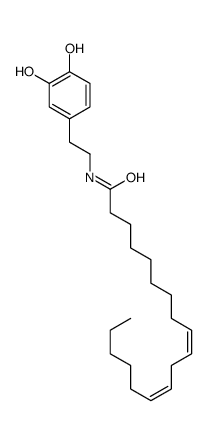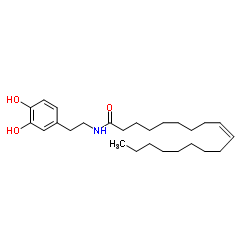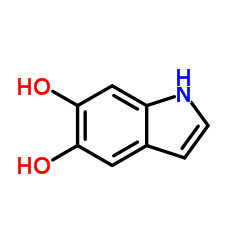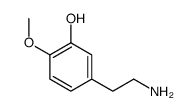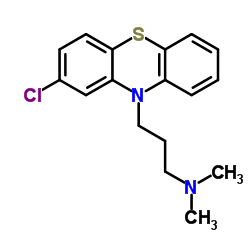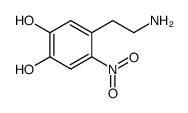51-61-6
| 中文名 | 2-(3,4-二羟基苯基)乙胺 |
|---|---|
| 英文名 | dopamine |
| 中文别名 | 多巴胺 |
| 英文别名 |
3,4-Dihydroxy-b-phenethylamine Hydrochloride
4-(2-aminoethyl)benzene-1,2-diol 1,2-Benzenediol, 4-(2-aminoethyl)- 4-(2-Aminoethyl)-1,2-benzenediol 4-(2-aminoéthyl)benzène-1,2-diol chlorhydrate b-(3,4-Dihydroxyphenyl)ethylamine Hydrochloride Tensamin α-(3,4-Dihydroxyphenyl)-β-aminoethane 4-(2-Aminoethyl)benzene-1,2-diol hydrochloride (1:1) Rascordin Pyrocatechol, 4- (2-aminoethyl)-, hydrochloride 4-(2-aminoethyl)-pyrocatechol EINECS 200-110-0 1,2-Benzenediol, 4-(2-aminoethyl)-, hydrochloride (1:1) 1,2-Benzenediol, 4- (2-aminoethyl)-, hydrochloride 4-(2-Aminoethyl)-1,2-benzenediol hydrochloride (1:1) 4-(2-aminoethyl)-Pyrocatechol hydrochloride 4-(2-Aminoethyl)benzol-1,2-diolhydrochlorid .α.-(3,4-Dihydroxyphenyl)-.β.-aminoethane 4-(2-Aminoethyl)catechol, hydrochloride β-(3,4-Dihydroxyphenyl)ethylamine hydrochloride DA dopamine a-(3,4-Dihydroxyphenyl)-b-aminoethane |
| 密度 | 1.2±0.1 g/cm3 |
|---|---|
| 沸点 | 337.7±27.0 °C at 760 mmHg |
| 熔点 | 218-220ºC |
| 分子式 | C8H11NO2 |
| 分子量 | 153.18 |
| 闪点 | 158.0±23.7 °C |
| PSA | 66.48000 |
| LogP | 0.12 |
| 外观性状 | 固体 |
| 蒸汽压 | 0.0±0.8 mmHg at 25°C |
| 折射率 | 1.619 |
| 储存条件 | 库房低温,通风,干燥 |
| 稳定性 | 多巴胺游离基在棱状结晶。对氧极敏感,遇氧很快自动氧化变色。 |
| 分子结构 | 1、 摩尔折射率:43.10 2、 摩尔体积(cm3/mol):122.7 3、 等张比容(90.2K):342.9 4、 表面张力(dyne/cm):60.8 5、 极化率(10-24cm3):17.08 |
| 计算化学 | 1.疏水参数计算参考值(XlogP):无 2.氢键供体数量:3 3.氢键受体数量:3 4.可旋转化学键数量:2 5.互变异构体数量:18 6.拓扑分子极性表面积66.5 7.重原子数量:11 8.表面电荷:0 9.复杂度:119 10.同位素原子数量:0 11.确定原子立构中心数量:0 12.不确定原子立构中心数量:0 13.确定化学键立构中心数量:0 14.不确定化学键立构中心数量:0 15.共价键单元数量:1 |
Synonym: Section 2 - COMPOSITION, INFORMATION ON INGREDIENTS
Risk Phrases: None Listed. Section 3 - HAZARDS IDENTIFICATION EMERGENCY OVERVIEW
Not available. Potential Health Effects The toxicological properties of this material have not been investigated. Use appropriate procedures to prevent opportunities for direct contact with the skin or eyes and to prevent inhalation. Section 4 - FIRST AID MEASURES Eyes: Flush eyes with plenty of water for at least 15 minutes, occasionally lifting the upper and lower eyelids. Get medical aid immediately. Skin: Get medical aid. Flush skin with plenty of water for at least 15 minutes while removing contaminated clothing and shoes. Remove contaminated clothing and shoes. Ingestion: If victim is conscious and alert, give 2-4 cupfuls of milk or water. Get medical aid immediately. Inhalation: Get medical aid immediately. Remove from exposure and move to fresh air immediately. If not breathing, give artificial respiration. If breathing is difficult, give oxygen. Notes to Physician: Section 5 - FIRE FIGHTING MEASURES General Information: As in any fire, wear a self-contained breathing apparatus in pressure-demand, MSHA/NIOSH (approved or equivalent), and full protective gear. During a fire, irritating and highly toxic gases may be generated by thermal decomposition or combustion. Extinguishing Media: Use agent most appropriate to extinguish fire. Section 6 - ACCIDENTAL RELEASE MEASURES General Information: Use proper personal protective equipment as indicated in Section 8. Spills/Leaks: Clean up spills immediately, observing precautions in the Protective Equipment section. Section 7 - HANDLING and STORAGE Handling: Wash thoroughly after handling. Remove contaminated clothing and wash before reuse. Avoid contact with eyes, skin, and clothing. Avoid ingestion and inhalation. Storage: Store in a cool, dry place. Keep container closed when not in use. Section 8 - EXPOSURE CONTROLS, PERSONAL PROTECTION Engineering Controls: Use process enclosure, local exhaust ventilation, or other engineering controls to control airborne levels. Exposure Limits CAS# 51-61-6: Personal Protective Equipment Eyes: Wear chemical splash goggles. Skin: Wear appropriate protective gloves to prevent skin exposure. Clothing: Wear appropriate protective clothing to minimize contact with skin. Respirators: A respiratory protection program that meets OSHA's 29 CFR 1910.134 and ANSI Z88.2 requirements or European Standard EN 149 must be followed whenever workplace conditions warrant respirator use. Section 9 - PHYSICAL AND CHEMICAL PROPERTIES Physical State: Solid Color: grey Odor: Not available. pH: Not available. Vapor Pressure: Not available. Viscosity: Not available. Boiling Point: @ 760.00mm Hg Freezing/Melting Point: 218.00 - 220.00 deg C Autoignition Temperature: Not available. Flash Point: Not available. Explosion Limits, lower: Not available. Explosion Limits, upper: Not available. Decomposition Temperature: Solubility in water: Specific Gravity/Density: Molecular Formula: C8H11NO2.HBr Molecular Weight: 234.10 Section 10 - STABILITY AND REACTIVITY Chemical Stability: Stable under normal temperatures and pressures. Conditions to Avoid: Incompatible materials, strong oxidants. Incompatibilities with Other Materials: Not available. Hazardous Decomposition Products: Irritating and toxic fumes and gases. Hazardous Polymerization: Not available. Section 11 - TOXICOLOGICAL INFORMATION RTECS#: CAS# 51-61-6: UX1088000 LD50/LC50: Not available. Carcinogenicity: 3-hydroxytyramine hydrobromide, 99% - Not listed by ACGIH, IARC, or NTP. Other: See actual entry in RTECS for complete information. Section 12 - ECOLOGICAL INFORMATION Section 13 - DISPOSAL CONSIDERATIONS Dispose of in a manner consistent with federal, state, and local regulations. Section 14 - TRANSPORT INFORMATION IATA Not regulated as a hazardous material. IMO Not regulated as a hazardous material. RID/ADR Not regulated as a hazardous material. Section 15 - REGULATORY INFORMATION European/International Regulations European Labeling in Accordance with EC Directives Hazard Symbols: Not available. Risk Phrases: Safety Phrases: S 24/25 Avoid contact with skin and eyes. WGK (Water Danger/Protection) CAS# 51-61-6: No information available. Canada None of the chemicals in this product are listed on the DSL/NDSL list. CAS# 51-61-6 is not listed on Canada's Ingredient Disclosure List. US FEDERAL TSCA CAS# 51-61-6 is not listed on the TSCA inventory. It is for research and development use only. SECTION 16 - ADDITIONAL INFORMATION N/A |
|
毒理学数据: 腹腔- 大鼠 LD50: 163 毫克/ 公斤; 腹腔- 小鼠 LD50: 950 毫克/ 公斤。 CHEMICAL IDENTIFICATION
HEALTH HAZARD DATAACUTE TOXICITY DATA
MUTATION DATA
|
| 上游产品 9 | |
|---|---|
| 下游产品 10 | |


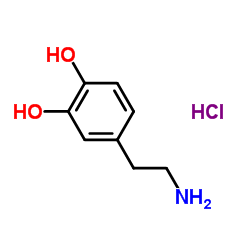
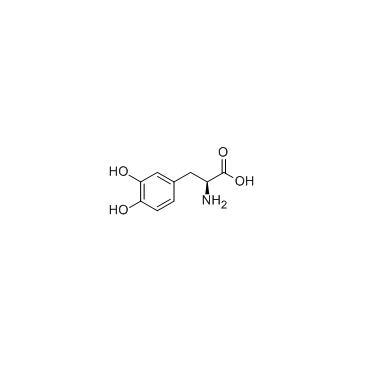
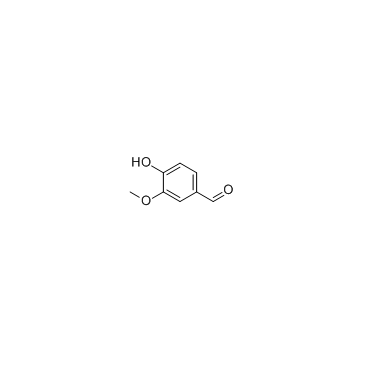
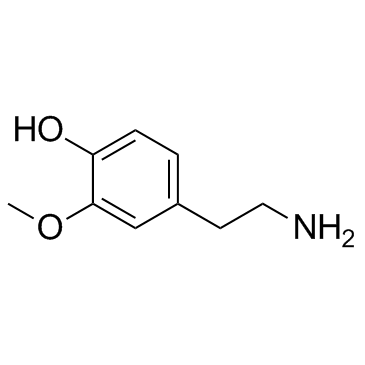

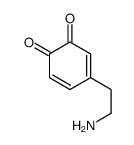

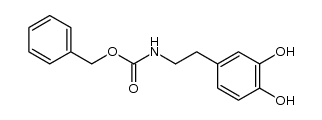
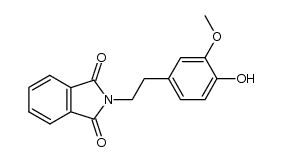
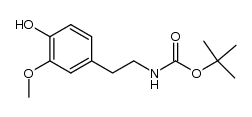
![N-[2-(3,4-dihydroxyphenyl)ethyl]octadeca-9,12,15-trienamide结构式](https://image.chemsrc.com/caspic/238/105955-13-3.png)
